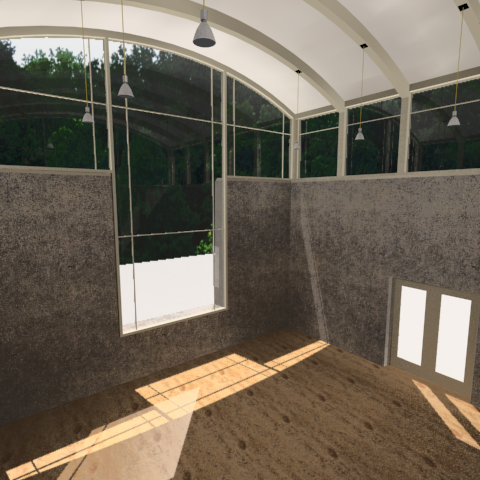The settings for an Architectural material are physical properties, so it provides the greatest possible realism when used with photometric lights and radiosity. With this combination of features, you can create lighting studies with a high degree of accuracy.

Architectural materials used with photometric lights and a radiosity solution create a realistic rendering with accurate lighting levels.
It is not recommended that you use the Architectural material with standard 3ds Max lights in the scene, or with the Light Tracer. The point of this material is to provide accurate modeling. Use it with photometric lights and radiosity. The mental ray renderer, on the other hand, can render the Architectural material, with some limitations described below.
Material Templates
When you create a new material, you can choose from a variety of templates. A template is simply a set of preset material parameters, which approximates the kind of material you want to create, and gives you a starting point. See Templates Rollout.
Rendering Architectural Materials with the mental ray Renderer
The mental ray Renderer can render Architectural materials. There are some limitations, as follows:
- Emit Energy (Based on Luminance): This setting is ignored. The Architectural material does not contribute to the scene's lighting.
- Sampling Parameters: These settings are ignored, as the mental ray renderer uses its own sampling.